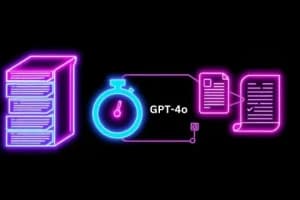Recent Articles
- How to solve "ValueError: y should be a 1d array, got an array of shape (3, 5) instead." for naive Bayes?
- How to create image of confusion matrix in Python
- What are the numbers in torch.transforms.normalize and how to select them?
- How to assign a name for a pytorch layer?
- How to solve dist.init_process_group from hanging or deadlocks?
- How to use sample weights with tensorflow datasets?
- How to Fine-tune HuggingFace BERT model for Text Classification
- How to Convert Yolov5 model to tensorflow.js
- Machine Learning Project Environment Setup
- Machine Learning Project: Airline Tickets Price Prediction
- Machine Learning Project: Hotel Booking Prediction [Part 2]
- Machine Learning Project: Hotel Booking Prediction [Part 1]
- Computer vision final year project ideas and guidelines
- Build Your First Machine Learning Project in Python(Step by Step Tutorial)
- Virtual assistant final year project ideas and guidelines
- Self-driving car github repositories and projects
- Self-Driving car research topics and guidelines
- Self-Driving car final year project ideas and guidelines
- Artificial Intelligence in Self Driving Car and how it works
- A Quick Guide to Build and Deploy Machine Leaning Models with IBM Watson and Django
How to Use Class Weights with Focal Loss in PyTorch for Imbalanced dataset for MultiClass Classification
Recommended Projects

Topic modeling using K-means clustering to group customer reviews
Have you ever thought about the ways one can analyze a review to extract all the misleading or useful information?...

Automatic Eye Cataract Detection Using YOLOv8
Cataracts are a leading cause of vision impairment worldwide, affecting millions of people every year. Early detection and timely intervention...

Medical Image Segmentation With UNET
Have you ever thought about how doctors are so precise in diagnosing any conditions based on medical images? Quite simply,...

Real-Time License Plate Detection Using YOLOv8 and OCR Model
Ever wondered how those cameras catch license plates so quickly? Well, this project does just that! Using YOLOv8 for real-time...

Voice Cloning Application Using RVC
Ever been curious about voice cloning? Thanks to advanced technology such as deep learning and RVC (Retrieval-based Voice Conversion), it...

Build A Book Recommender System With TF-IDF And Clustering(Python)
Have you ever thought about the reasons behind the segregation and recommendation of books with similarities? This project is aimed...

Optimizing Chunk Sizes for Efficient and Accurate Document Retrieval Using HyDE Evaluation
This project demonstrates the integration of generative AI techniques with efficient document retrieval by leveraging GPT-4 and vector indexing. It...